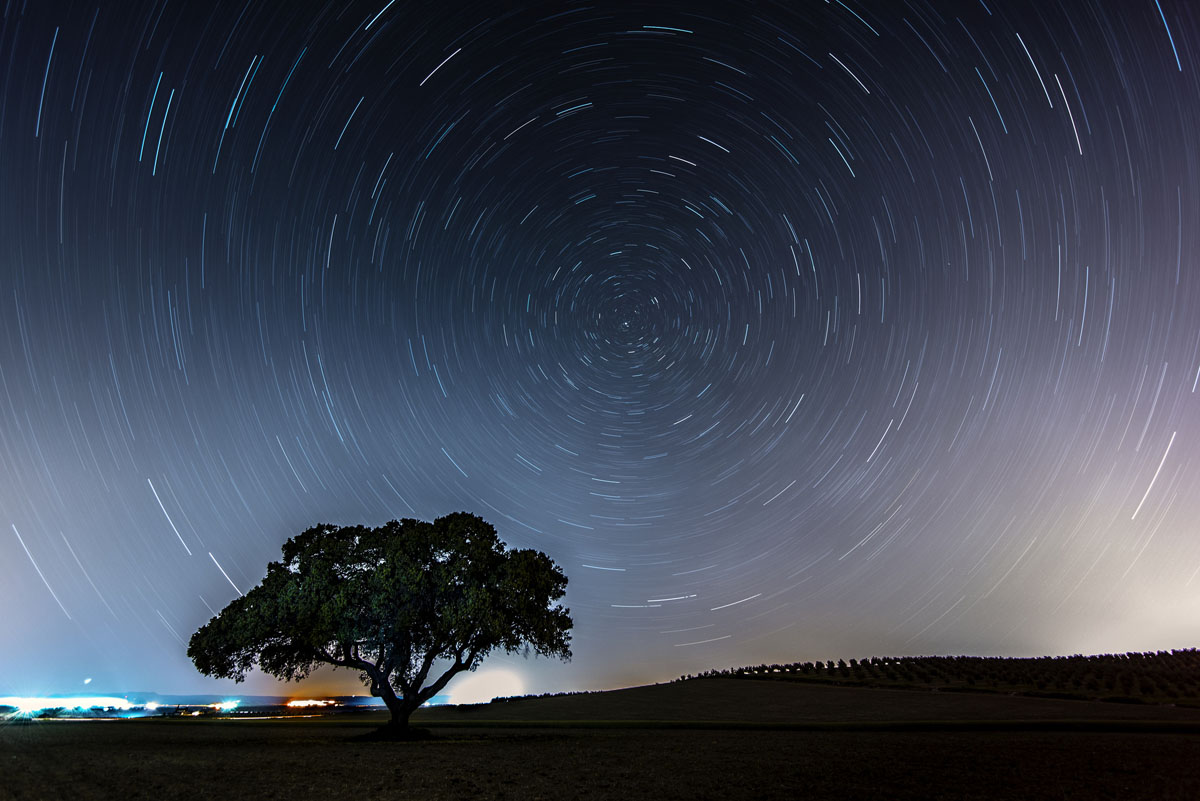
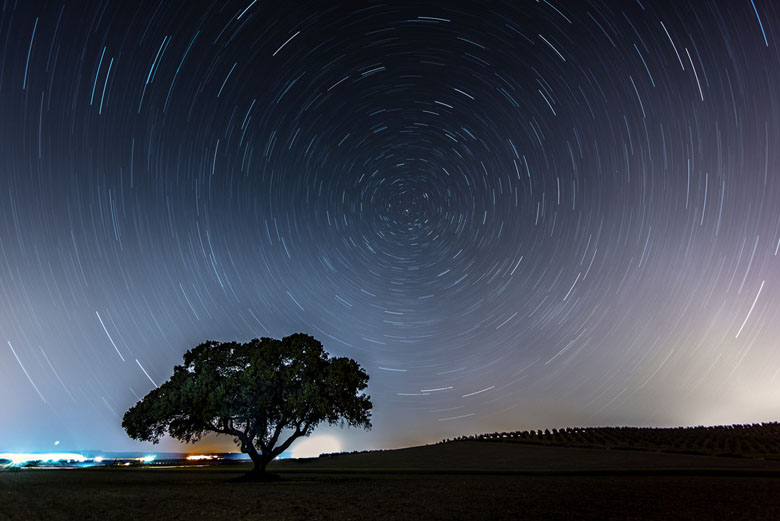
Nikon16-35mm f/4 (Ramon Portellano)
The Nikon D750 leads the pack of affordable full-frame DSLRs in 2016, offering professional-grade image quality at a sub-$2,000 price point. You get the same EXPEED 4 image processor and 1080p video speeds as the pricier D810, but with fewer megapixels at 24.3. Below are the best lenses for the Nikon D750, from the 24-120mm kit lens to wide-angle and telephoto zoom. With Nikon’s varied collection of FX glass, there are a number of great options across the spectrum of price points and lens types. For more information, see our lens comparison table and buying advice below the picks.
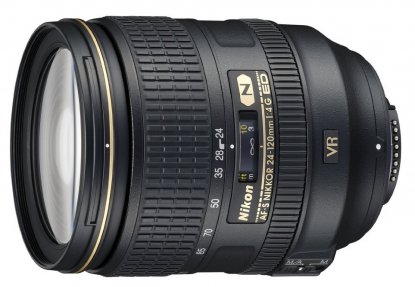 Category: Travel zoom/portrait
Category: Travel zoom/portrait
Weight: 23.6 oz.
What we like: Useful focal length range from wide-angle to medium telephoto.
What we don't: Distortion and low light performance.
Nikon’s kit lenses keep improving, and the 24-120mm is case in point. For about $500 more than the cost of the camera body alone, you get a versatile zoom lens with coverage from wide angle to medium telephoto. This lens is noticeably sharper than comparable zooms, has fast and accurate autofocus, and a respectable f/4 maximum aperture. All in all, the 24-120mm makes a great travel and walk-around lens for the Nikon D750.
One of the biggest downsides of this lens—and many zooms—is distortion. You’ll notice it most when shooting at the wide and telephoto ends, but distortion is present pretty much throughout its focal length range. And in terms of low light performance, f/4 is decent but not on par with faster primes and pro zooms like the 28-70mm f/2.8 below. If you’re in the process of buying the D750 body, we love the value of the 24-120mm kit. If you already own the camera, there are other attractive options below.
See the Nikon 24-120mm f/4 kit
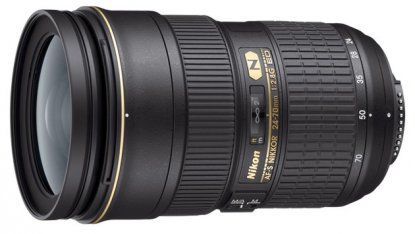 Category: Travel zoom/portrait
Category: Travel zoom/portrait
Weight: 31.8 oz.
What we like: Sharp and extremely versatile.
What we don't: Bulky and expensive.
If you’re in the market for a top tier zoom lens with coverage from wide-angle to short telephoto, give the Nikon 24-70mm f/2.8 a serious look. It’s one of the most popular lenses in the FX lineup and for good reason: the lens is sharp across its zoom range, focuses quickly and accurately, and has a sturdy build. In addition to stellar optical performance, what people like most about this lens is its versatility: the Nikon 24-70mm can replace a handful of specialty prime and zoom lenses for travel and portraits. However, the nearly $2,000 price tag is tough to swallow, and it's definitely on the heavy side at nearly 2 pounds. The lens also lacks vibration reduction, but given the maximum aperture of f/2.8, this isn’t a huge omission.
See the Nikon 24-70mm f/2.8
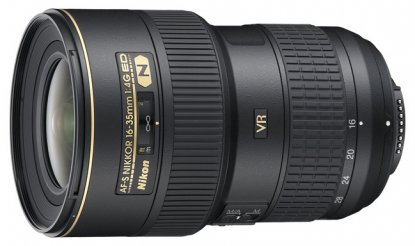 Category: Wide angle
Category: Wide angle
Weight: 24 oz.
What we like: Great value for a wide-angle lens.
What we don't: Slower than the 14-24mm f/2.8 below.
The Nikon 16-35mm f/4 VR is a great option to pair with the D750, giving you professional-caliber wide-angle images without breaking the bank. The big competition is the Nikon 14-24mm f/2.8 below, which is superior optically but not necessarily as good of a buy. First and foremost, the 16-35mm f/4 is much cheaper. Second, it covers more focal lengths, and aside from not being able to match the ultra-wide capability at 14mm, has a more useful zoom range. Third, it’s more than 8 ounces lighter. The biggest shortcoming of the 16-35mm is the maximum aperture of f/4, which is serviceable but not optimal in low light (the lens does have vibration reduction). Both lenses are sharp and you can’t go wrong with either, but we think the Nikon 16-35mm is a better fit for most photographers.
See the Nikon 16-35mm f/4
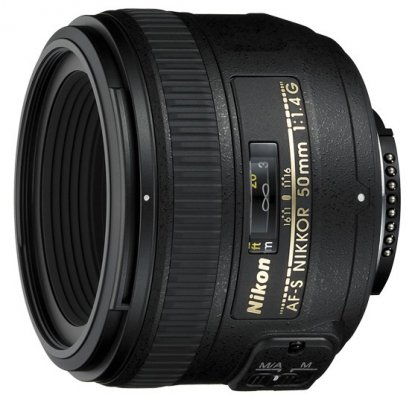 Category: Portrait
Category: Portrait
Weight: 12.7 oz.
What we like: The best low light performance on this list.
What we don't: Barrel distortion.
For portraits, the 50mm f/1.4G is one of Nikon’s best FX-format prime lenses. It performs extremely well in low light, has fast and accurate autofocus, and impressive bokeh. Compared to other f/1.4 full-frame prime lenses like the 35mm, the 50mm also is significantly cheaper and lighter and only 10 ounces. What are its shortcomings? It has strong barrel distortion that is noticeable when shooting straight lines, an uncommon trait on Nikkor prime lenses. Another 50mm option for the D750 is the Nikon 50mm f/1.8, which is cheaper but not quite as good in low light.
See the Nikon 50mm f/1.4
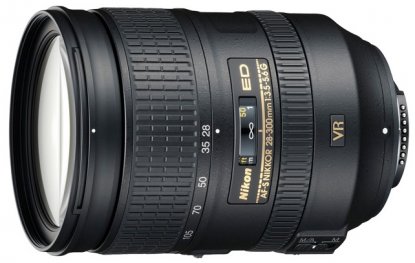 Category: All-in-one
Category: All-in-one
Weight: 28.2 oz.
What we like: Can be the only lens in your bag.
What we don't: Heavy and some distortion at the ends.
All-in-one lenses are popular for crop-frame cameras and there are a variety of options on that side of the aisle. For full-frame cameras like the D750, the Nikon 28-300mm VR currently is the only all-in-one FX lens. You can expect noticeable distortion at the ends (the Nikon D750 does have a built-in distortion correction mode) but the lens is sharp throughout its zoom range, focuses reasonably quickly, and captures good images overall. It is a heavy lens at over 28 ounces, but actually is lighter than many of the zoom lenses on this list including the Nikon 24-70mm and Nikon 14-24mm. The 28-300mm also is a good value: for just over $1,000 you can avoid buying and switching out multiple prime and zoom lenses.
See the Nikon 28-300mm f/3.5-5.6
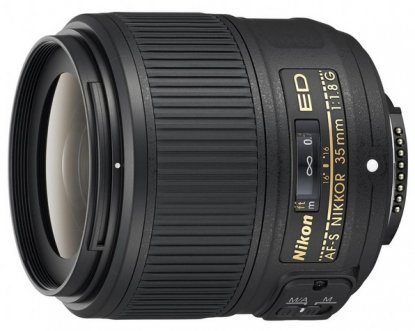 Category: Travel/portrait
Category: Travel/portrait
Weight: 10.8 oz.
What we like: Lightweight and a good value.
What we don't: Plastic build and not as sharp as some other lenses on this list.
Released a couple of years ago, the Nikon 35mm f/1.8 is a breath of fresh air for those who want a 35mm prime lens at a reasonable price point. Previously, the expensive Nikon 35mm f/1.4 was the leading option at this focal length, and it still may be for professional photographers who depend on it frequently. But we like the f/1.8 version, which has good sharpness, fast autofocus, respectable bokeh, and is a solid value at just over $500. Keep in mind that aside from a metal mount, the lens is constructed mostly of plastic and therefore may have more issues with durability than the f/1.4. But the plastic does help keep it light at 10.8 ounces, and again, we like the price.
See the Nikon 35mm f/1.8
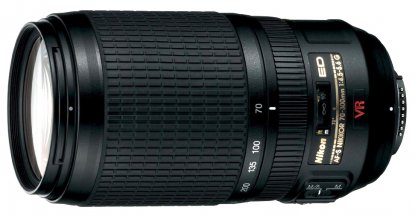 Category: Telephoto
Category: TelephotoWeight: 26.3 oz.
What we like: Long zoom range and low cost.
What we don't: Some distortion and softness.
The Nikon 70-300mm VR is an excellent telephoto zoom to pair with the D750 and one of the best values of any FX lens. For under $600, you get reasonably sharp images throughout its long zoom range, vibration reduction covering up to four stops, and a Silent Wave Motor that focuses quickly (most of the time). The biggest shortcoming of this lens is its maximum aperture of f/4.5-5.6—professionals and those who frequently shoot in low light should consider the Nikon 70-200mm f/2.8 below. But for the majority of people who aren’t telephoto specialists, this is a reasonably priced telephoto option.
See the Nikon 70-300mm f/4.5-5.6
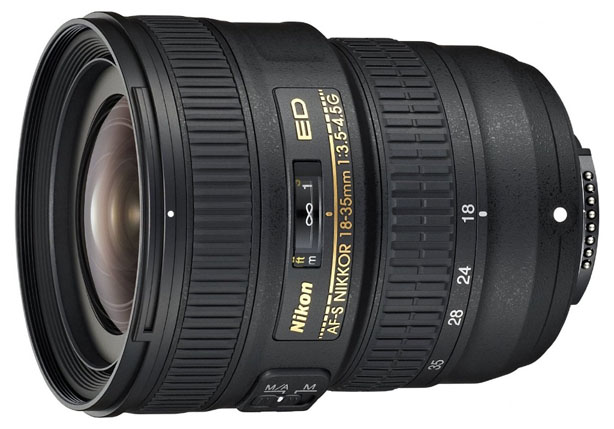 Category: Wide angle
Category: Wide angle
Weight: 13.6 oz.
What we like: Lightweight and inexpensive for a wide-angle zoom.
What we don't: No vibration reduction.
A few years ago Nikon bucked the trend of ultra-pricey wide-angle zooms with the release of the 18-35mm f/3.5-4.5. We really like this lens and the optics are much better than you might expect at this price point, including good sharpness, fast autofocus, and less distortion than many of Nikon’s older wide-angle zooms. The clear sacrifice comes with low light performance, and given that the lens does not have vibration reduction, this isn’t an optimal choice for sunsets or dimly lit indoor shots. But for the majority of other uses, it’s a great way to get a true wide-angle lens for the D750.
See the Nikon 18-35mm f/3.5-4.5
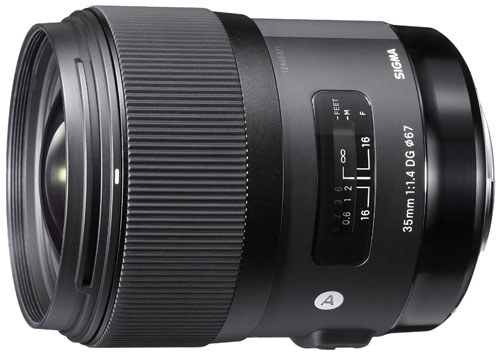 Category: Travel/portrait
Category: Travel/portrait
Weight: 32 oz.
What we like: Fast, sharp, and much cheaper than the Nikon 35mm f/1.4.
What we don’t: Heavy and focus may need calibration.
If 35mm is your focal length of choice, Sigma’s Art series is making big waves of late, offering ultra-fast prime lenses at reasonable price points. The 35mm f/1.4 is super sharp, superb in low light, and about $600 cheaper than Nikon’s native 35mm f/1.4. You can opt for the cheaper Nikon 35mm f/1.8 above, but we jump on the opportunity to shoot at f/1.4 whenever possible, and especially if you shoot at this focal length frequently.
Similar to other third-party lenses used on Nikon camera bodies, autofocus can be an annoyance with the Sigma 35mm f/1.4. A number of users have reported inaccuracies out of the box that require calibration either manually or via Sigma’s USB lens calibration dock. And despite the impressive build quality, this lens is very heavy for a prime at 2 pounds. But if you love shooting at 35mm, we highly recommend giving the Sigma Art series serious consideration.
See the Sigma 35mm f/1.4
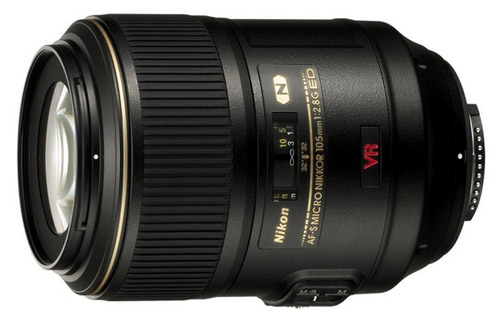 Category: Macro
Category: Macro
Weight: 25.4 oz.
What we like: Versatile and sharp.
What we don't: Heavy for a prime lens.
The Nikon 105mm f/2.8 is our favorite macro lens for FX (Nikon uses the term "Micro"). With a minimum focusing distance of just over 12 inches and impressive sharpness, this lens can handle the majority of your macro needs. It also doubles as a short telephoto including vibration reduction. For both types of photography autofocus generally is fast and accurate, images are extremely sharp, and low light performance is on par with other lenses of this type. The 105mm f/2.8 is heavy at over 25 ounces and has a lot of plastic in the build, but the optics are spectacular.
See the Nikon 105mm f/2.8
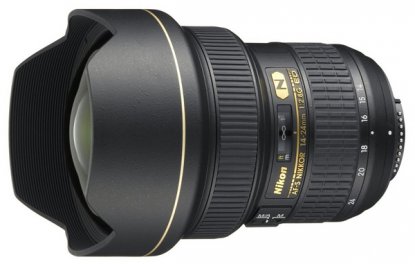 Category: Wide angle
Category: Wide angle
Weight: 34.2 oz.
What we like: Nikon's top wide-angle zoom.
What we don't: Expensive and heavy.
If you’re serious about landscape photography, the 14-24mm f/2.8 is Nikon’s premier wide-angle zoom and a favorite among professionals. This lens captures exceptionally sharp images throughout its range, focuses quickly, and the constant f/2.8 maximum aperture is a full stop faster than the 16-35mm f/4 above. In terms of image quality and low light performance, you won’t find a better wide-angle zoom.
Why isn’t the Nikon 14-24mm ranked higher on this list? It costs nearly $2,000 and is heavy at over 34 ounces, both of which are major downsides. You also can expect significant distortion at the wide end, but this is normal for a lens of this type and can be corrected in-camera on the D750. All things considered, we like this lens more for a camera like the D810 or D5—the cheaper wide-angle options on this list should serve most Nikon D750 users just fine. But that’s not a knock on its excellent optical and overall build quality.
See the Nikon 14-24mm f/2.8
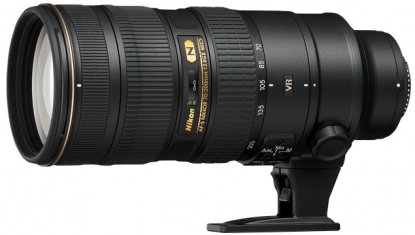 Category: Telephoto
Category: Telephoto
Weight: 54.3 oz.
What we like: Nikon’s top telephoto zoom for FX.
What we don't: Very heavy and pricey.
For most people, the Nikon 70-300mm above serves the purpose of adding telephoto capability without the need for a true pro lens. But if it’s premium image quality you’re after, the 70-200mm f/2.8 is the real deal. And you may want to add a tripod to your purchase: the Nikon 70-200mm f/2.8 VR II weighs a hefty 54.3 ounces. That issue notwithstanding, this is Nikon’s best performing telephoto zoom lens for everything from sports to school plays. The autofocus is fast and accurate, sharpness and colors are exemplary, distortion is low, and the lens comes with vibration reduction. Wildlife photographers likely will find that 200mm is not sufficient for far-off subjects, but the FX options get very pricey as telephoto capability increases (see the new Nikon 400mm f/2.8E, for example). For more reach but inferior low light performance, see the Nikon 200-500mm f/5.6.
See the Nikon 70-200mm f/2.8
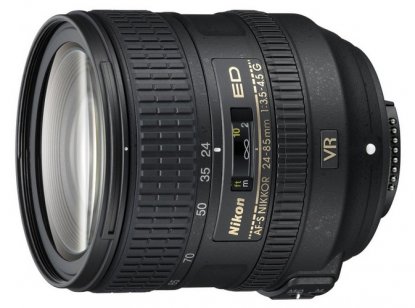 Category: Travel zoom/portrait
Category: Travel zoom/portrait
Weight: 16.4 oz.
What we like: One of the best values of any FX lens.
What we don't: Distortion and softness.
If you haven’t yet purchased the D750 camera body, we recommend the 24-120mm kit lens above. But if you already own the D750 and are looking for an inexpensive walk-around zoom lens, the Nikon 24-85mm is your next best option. For under $500 you get an FX lens that can shoot anything from wide-angle photos to portraits. Low light performance is merely okay at f/3.5-4.5 and the lens does not have vibration reduction (this is one of the reasons it’s so cheap). And compared to other top zoom lenses, the 24-85mm has more distortion and softness, particularly in the corners. Yet for those on a budget, it’s an enticing option to pair with the D750 and a decent starter lens.
See the Nikon 24-85mm f/3.5-4.5
| Lens | Price | Category | Aperture | Weight | VR | Filter |
|---|---|---|---|---|---|---|
| Nikon 24-120mm f/4 VR | $2,297 | Travel zoom/portrait | f/4 | 23.6 oz. | Yes | 77mm |
| Nikon 24-70mm f/2.8 | $1,697 | Travel zoom/portrait | f/2.8 | 31.8 oz. | No | 77mm |
| Nikon 16-35mm f/4 VR | $997 | Wide angle | f/4 | 24 oz. | Yes | 77mm |
| Nikon 50mm f/1.4G | $397 | Portrait | f/1.4 | 12.7 oz. | No | 58mm |
| Nikon 28-300mm f/3.5-5.6 VR | $947 | All-in-one | f/3.5-5.6 | 28.2 oz. | Yes | 77mm |
| Nikon 35mm f/1.8 | $527 | Travel/portrait | f/1.8 | 10.8 oz. | No | 35mm |
| Nikon 70-300mm f/4.5-5.6 VR | $497 | Telephoto | f/4.5-5.6 | 26.3 oz. | Yes | 67mm |
| Nikon 18-35mm f/3.5-5.6G | $747 | Wide angle | f/3.5 | 13.6 oz. | No | 77mm |
| Sigma 35mm f/1.4 | $899 | Travel/portrait | f/1.4 | 32 oz. | No | 67mm |
| Nikon 105mm f/2.8G VR | $897 | Macro | f/2.8 | 25.4 oz. | Yes | 62mm |
| Nikon 14-24mm f/2.8 | $1,897 | Wide angle | f.2.8 | 34.2 oz. | No | 77mm |
| Nikon 70-200mm f/2.8 VR II | $2,097 | Telephoto | f/2.8 | 54.3 oz. | Yes | 77mm |
| Nikon 24-85mm f/3.5-4.5 VR | $497 | Travel zoom/portrait | f/3.5-5.6 | 16.4 oz. | Yes | 72mm |
Given the low price of the Nikon D750 and 24-120mm f/4 VR kit, it’s tough to argue against it. The lens alone costs over $1,000, but the kit is only $300 more than the D750 camera body. Aside from marginal low light performance (the lens does have vibration reduction), the 24-120mm f/4 is a solid walk-around and travel lens that you may end up leaving on your camera most of the time. Nikon continues to improve the optics of their zooms and this lens is a great case in point.
With the kit lens being 24mm at the wide end—and you can expect some distortion and softness there—we would add a wide-angle zoom to the mix (landscape specialists should see our article on lenses and focal lengths for landscapes). A recommended option is the Nikon 16-35mm f/4, which is great for those who want to experiment with wide-angle photography without breaking the bank. This is an extremely fun lens, and again, much more affordable than the 14-24mm f/2.8.
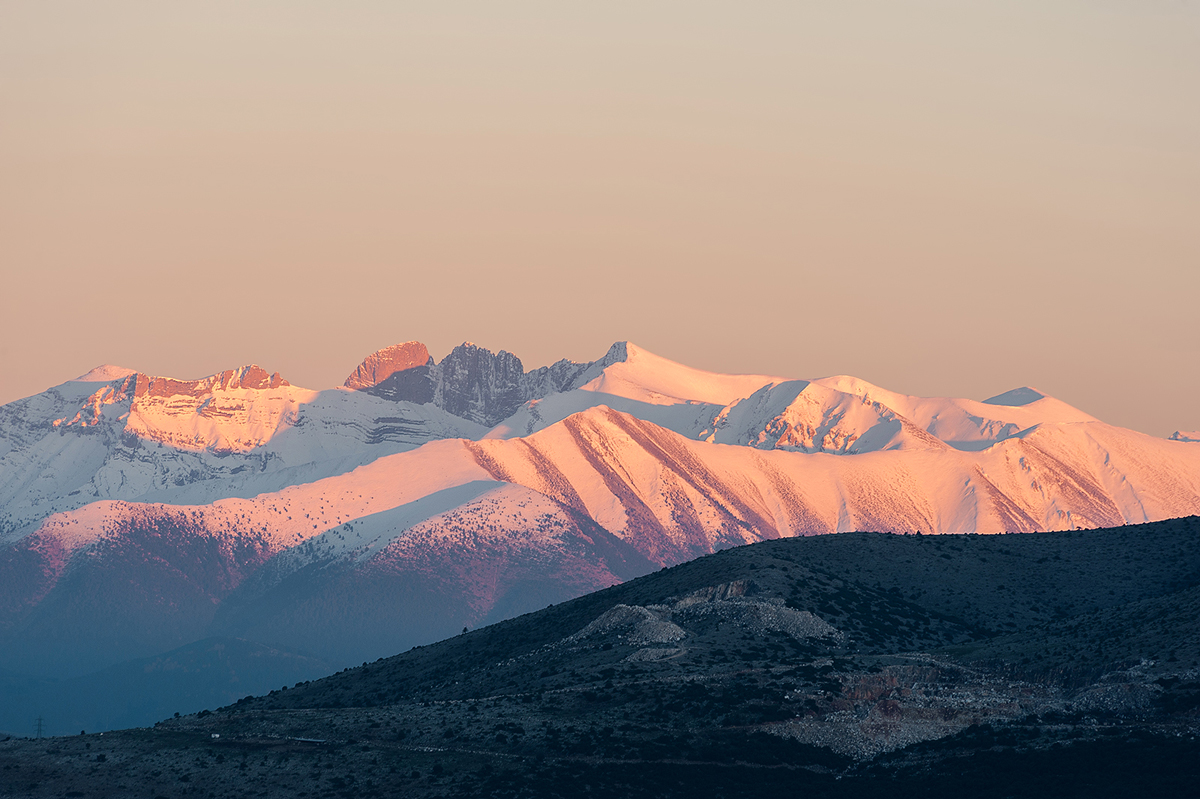
With solid coverage now from 16mm up to 120mm, we would add the Nikon 70-300mm f/4.5-5.6 VR. Again, this is a relatively slow zoom lens but you can’t beat the price for a full-frame telephoto. With the three lenses in this section, you have focal length coverage from 18mm to 300mm with multiple options to choose from. And yes, this combination of lenses will outperform the all-in-one 28-300mm f/3.5-5.6 VR, not to mention having far superior wide-angle capability.
A number of third-party manufacturers like Sigma, Tamron, and Tokina make lenses that are compatible with Nikon FX (full-frame) cameras like the D750. These lenses usually are cheaper than their Nikon counterparts—one of their big selling points—and usually have some quirks such as slower autofocus and more softness.
We prefer Nikon lenses but find third-party lenses most beneficial when they cover a unique aperture or focal length range (or are just flat out cheaper than the Nikon options). Sigma’s relatively new “Art” series is a great example, which features a number of f/1.4 prime lenses that are much less expensive than comparable Nikon options. However, if you read the reviews closely you’ll notice a number of people have had issues with autofocus speed and accuracy. You can attempt to calibrate your third-party lens upon purchase, but that to us is a significant downside compared to buying Nikon lenses that rarely have such problems.
This doesn’t mean that you should pass entirely on third-party lenses. For this article we considered many of them and included the Sigma 35mm f/1.4. As long as you do your research and understand the possible shortcomings, they can be a great opportunity to get a lens with good specs at an inexpensive price point.
You’ll notice that the majority of lenses on this list are zooms. Generally, zoom lenses are more versatile because they cover a range of focal lengths, while primes perform better in low light and have less distortion. The Nikon D750 does have a distortion correction mode built into the camera, which benefits zoom lenses.

People who choose the D750 may not have an infinite budget—it’s not the pricier D810 after all. And given the awesome value that is the 24-120mm kit, it makes a lot of sense to go the zoom route. For those that want to dabble with primes, the 50mm f/1.4 is a great place to start. This lens will give you the spectacular bokeh and low light performance that you just can’t get from a zoom, and 50mm is a handy focal length for people shots. Other prime lenses will set you back more money, but if you're a professional or frequently shoot at a particular focal length it may be worth it.
Let us start by saying: don’t do it. Most DX lenses technically are compatible on FX-format cameras like the Nikon D750, so you will be able to take photos and use the autofocus. However, when a DX lens is attached to an FX camera like the D750, it automatically uses a DX crop mode to record only the center portion of the image and avoid vignetting in the corners. And given that the optical quality of DX lenses generally is inferior (the sensors are smaller and therefore they don’t demand the same level of complexity) there’s no real reason to use DX lenses on FX cameras. If you own DX lenses and want to experiment on the D750, that’s fine. But we heartily recommend against buying them for that purpose.